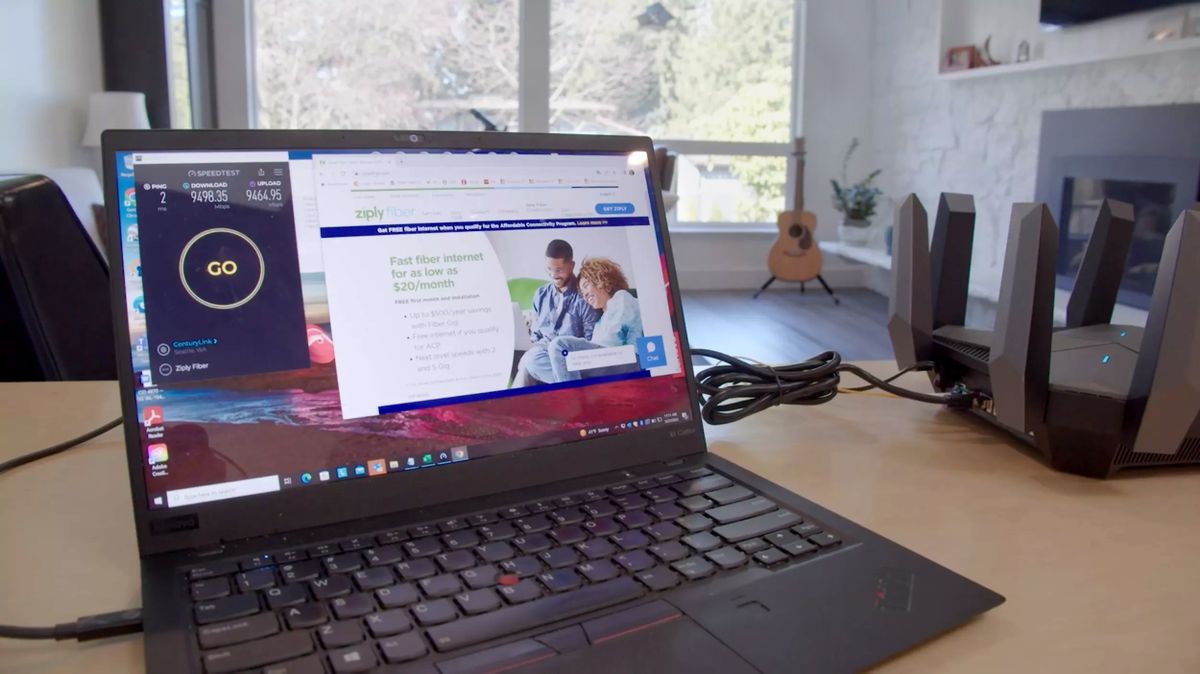The truth about Gigs, Gs and other internet marketing jargon

My phone runs on 5G. I also just saw a bunch of ads about “10G”. Is it twice as fast? Our local internet company, Ziply Fiber, just announced a 10 Gig plan. Is that the same?
If you’re confused by internet technologies and marketing jargon, you’re not alone. Here we break down the important differences so you can make an informed decision.
Gigabits/Megabits
Internet plans are marketed with speeds in Gigabits per second (Gbps) or Megabits per second (Mbps). The Gigabits (also known as Gigs) or Megabits indicate how much “stuff” (video, music, games, social content, emails) can get through at the same time.
Most residential customers are on plans between 50 Mbps and 1 Gig. “Gig-speed internet” means a plan offers a download speed of 1 Gigabit per second, or 1,000 megabits per second.
Upload/Download Speeds
A little-known fact is that most companies only list and market their download speeds, so if you see a cable internet provider listing 200 Mbps, for example, that’s only the download speed. However, the upload speed is equally important – it’s how fast you send things to the internet, like your image and voice on a video call – and it’s usually just a fraction of the download speed. When download and upload speeds are asymmetrical or uneven, you might hear people say that your video is frozen on a call, or the audio is cutting in and out, meaning your connection is likely causing problems.
Fiber-optic internet plans, like those from Ziply Fiber, are symmetrical, meaning they always offer the same upload and download speeds. This means better performance with no lag or buffering.
For the best internet experience, look for symmetrical upload and download speeds.
5G = 5th Generation Wireless
5G simply stands for 5th Generation and is the technology standard for broadband cellular networks today. When you see the “5G” symbol on your phone, it’s connected to your provider’s 5th Generation network.
The 5 doesn’t mean 5 times faster and doesn’t mean 5 Gigs. In fact, according to Ookla, the wireless carrier with the fastest 5G speed test for Q1 2023 had an average download speed of just 220.70 Mbps, a fraction of the speed consumers can access versus a typical gig-speed fiber plan.
10G = Network Name
There’s been a lot of marketing for this lately, but let’s be clear, unlike with 5G, 10G doesn’t mean 10th Generation because there was no 7G, 8G or 9G. It’s simply what a cable company named its network.
At this point, internet service providers (ISPs) touting 10G are often alluding to speeds that are still in development and confusing the public about what speeds they can offer by making it sound like they have 10 Gig plans. In most areas, plans advertised on a cable 10G network currently top out at 1 Gig download with a much lower upload speed, because many of these networks run on older copper-based technology designed for sending TV signals and not the modern internet that a fiber-to-the-home network is designed for.
10 Gig = Ultra-Fast Speeds
If 1 Gig = 1,000 Mbps, then 10 Gigs = 10,000 Mbps. That’s the latest speed tier from Ziply Fiber, recently named Fastest ISP in the West by CNET, when they launched the region’s first 10 Gig fiber-to-the-home network in Washington, Oregon, Idaho and Montana.
Residential fiber 10 Gig internet is brand new, and those who want to take advantage of its mind-blowing speed today are probably serious content creators. It also makes gaming and high-definition video streaming a blast.
What speed do I need?
Not everyone needs a 10 Gig or even a 5 Gig plan. Ziply Fiber’s most popular plans are their fiber 2 Gig and 1 Gig plans, which offer ultra-fast, reliable, symmetrical upload/download connectivity to allow you to do everything you want online seamlessly across multiple connected devices.
If your needs are minimal, then a basic fiber plan like the 100/100, which offers 100 Mbps download and upload speeds, provides a quality connection suitable for checking email, browsing and streaming at a very affordable price.
Bottom line: on fiber-optic internet, you won’t experience aggravations like buffering wheels and peak-time slowdowns. And remember: not all “G”s are created equal.
Dan Miller supports Ziply Fiber’s communications efforts in Washington, Oregon, Idaho and Montana. More information about the company and its work to bring fiber to communities across the Northwest can be found at ziplyfiber.com or by calling (866) 699-4759